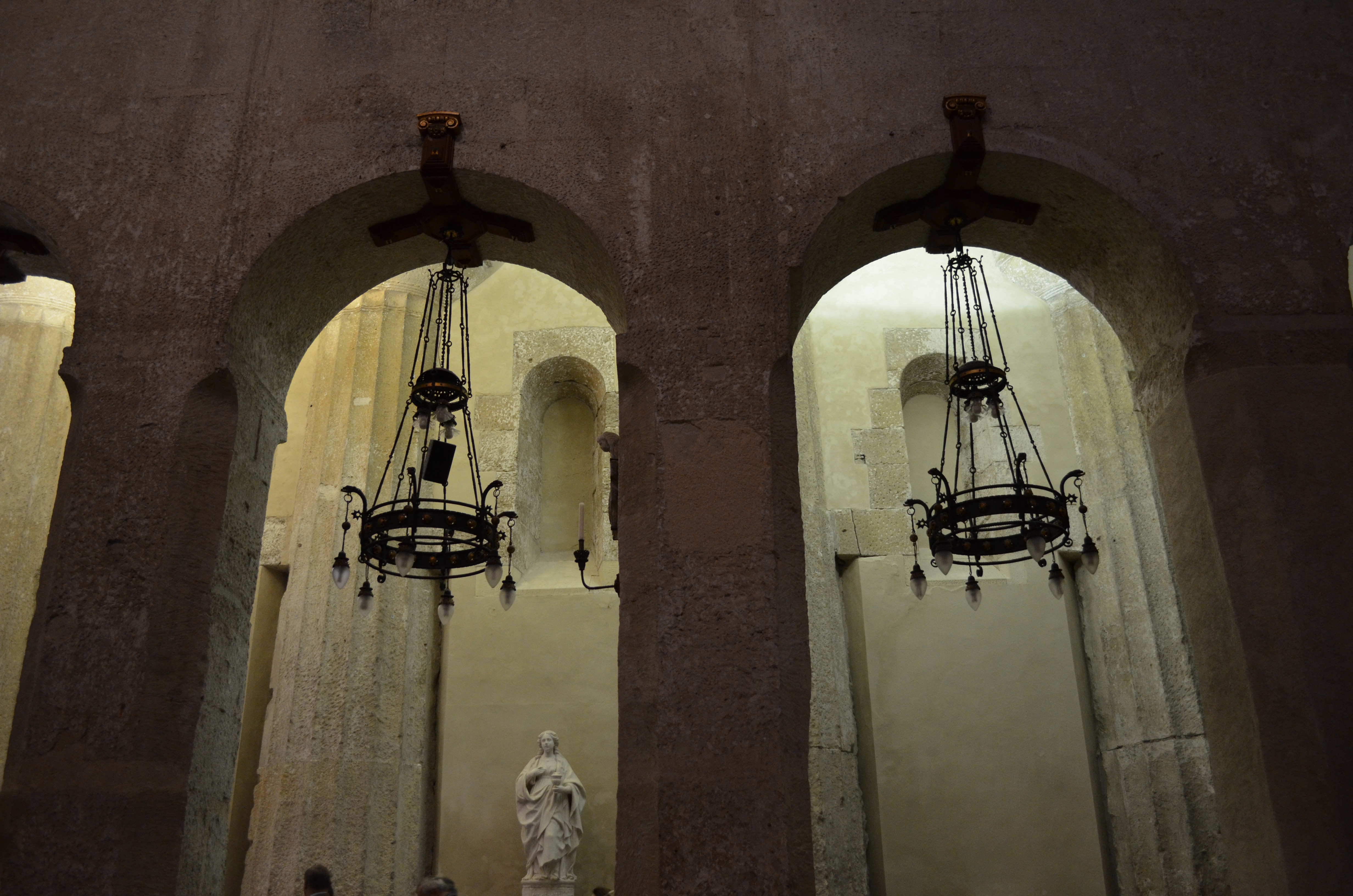Last May, my mother, brother, and I hit the road in Sicily to explore the island’s treasure, gastronomic, historic, and otherwise. I spent a good six months planning the trip and have since been asked for my itinerary on several occasions, so I thought I’d share it here.
First stop, Agrigento.
We took a Ryanair flight from Rome to Palermo and rented a car. I’d previously spent a week in the old port city, so we decided to skip it for this trip, but if you are looking for things to see, don’t skip the Duomo on top of Monreale. (We chose to skirt the western part of the island for this itinerary. I’ll go back one day for Trapani’s couscous and a ferry to Pantelleria island.)
 The drive from Palermo to Agrigento down the western highway was easy and painless. We made it to this southern city, with its beaches, medieval town, and incomparable Greek temples, within two hours. Our little villa was adorable (and cheap) with its lovely gardens and view of the Greek ruins, and if we hadn’t needed to hit the road, we might have stayed another night to hit the beaches.
The drive from Palermo to Agrigento down the western highway was easy and painless. We made it to this southern city, with its beaches, medieval town, and incomparable Greek temples, within two hours. Our little villa was adorable (and cheap) with its lovely gardens and view of the Greek ruins, and if we hadn’t needed to hit the road, we might have stayed another night to hit the beaches.
To stay:
Foresteria Baglio della Luna, Via Serafino Amabile Guastella snc – C.da Maddalusa, Agrigento, 92100
To see:
- A stroll through the medieval town to enjoy some traditional Sicilian pastries at Agrigento Bakery and dinner at Per Bacco, nestled in a small alley above the main road
- The Valley of the Temples, preferably at sunset, to see the best-preserved Greek temple in existence
- A dip in the turquoise Mediterranean at the beaches of San Leone
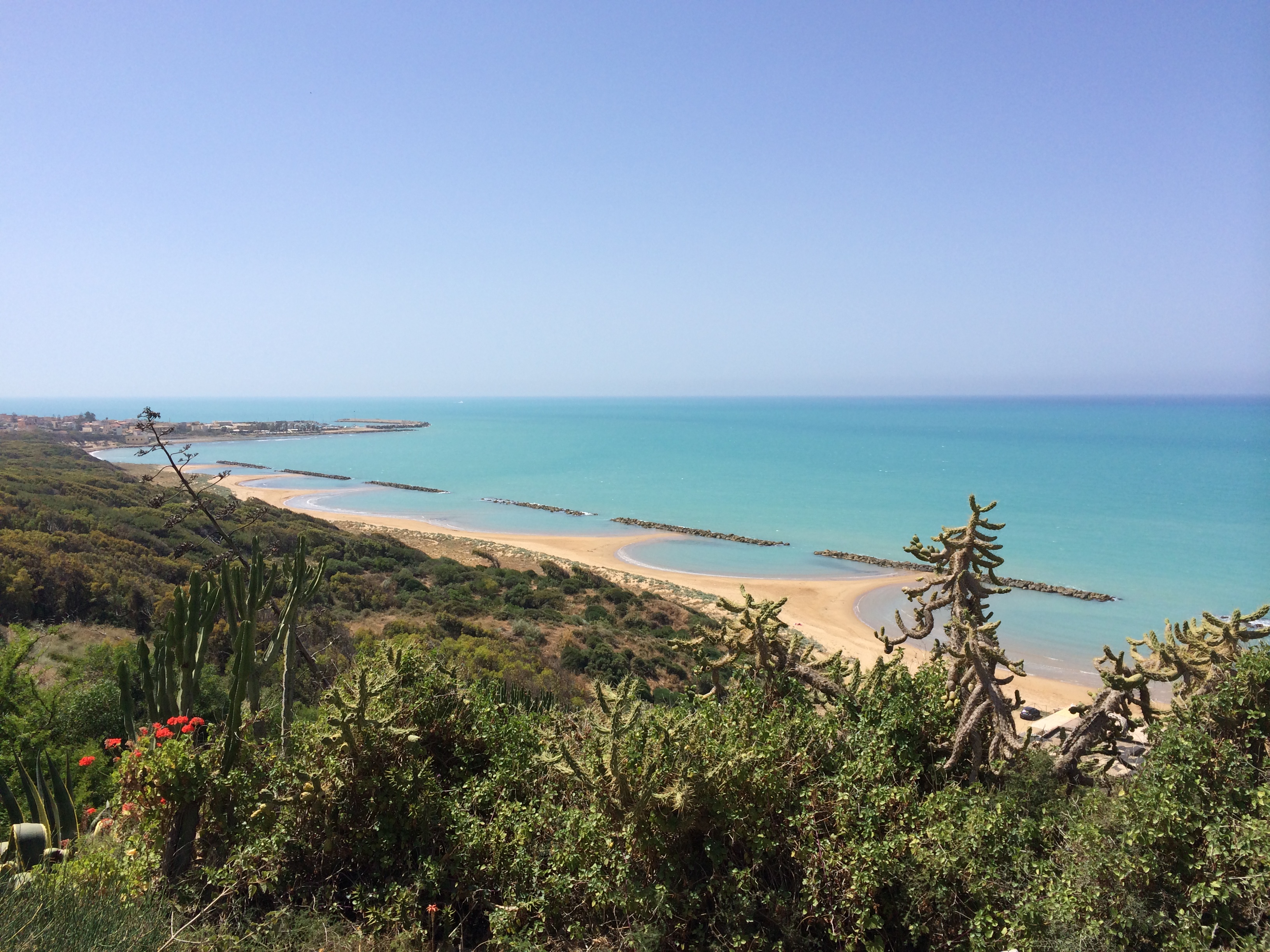
Next: Enna, Villa Romana del Casale at Piazza Armerina, Mt. Etna, Taormina…
We got up early the next day, packed the car, and hit the road up into the middle of the island. Enna is considered to be Sicily’s belly button, and the views from this centrally located, fortified town high on the hills is definitely worth a stopover for a few hours. We made our way to the Castello on the hill, climbing the watch tower (perhaps the island’s highest point) just before they closed for lunch, then bought some sugared almonds and herbs from the contadino parked by the entrance. This town is very sleepy, but parking wasn’t an issue, and we had a decent meal at Castello off the main drag.
 We then backtracked down a country road about 30 minutes to reach the town of Piazza Armerina. Just outside of the town, the imperial hunting residence of Emperor Maximus is beautifully preserved. The intricacies of its mosaics – which range from hunting scenes in Africa and India to women in bikinis – are well worth the side trip. After the mosaics, we hit the highway for Catania and headed toward the looming volcano on the eastern side of the island.
We then backtracked down a country road about 30 minutes to reach the town of Piazza Armerina. Just outside of the town, the imperial hunting residence of Emperor Maximus is beautifully preserved. The intricacies of its mosaics – which range from hunting scenes in Africa and India to women in bikinis – are well worth the side trip. After the mosaics, we hit the highway for Catania and headed toward the looming volcano on the eastern side of the island.

Our next stop was a three-day sojourn at the beautiful Monaci delle Terre Nere, our home base for exploring the area and for general benessere, considering its superb food and wine offerings. Through the hotel, we set up a guided tour of Mt. Etna with a certified naturalist guide, who taught us all about the different kinds of lava flows.

We then ate as well as we possibly could have and sipping wines from a variety of Etna’s producers. We also set up visits at two of the wineries, spending a morning at Tenuta delle Terre Nere and an afternoon at Passopisciaro, with a stop in nearby Randazzo for lunch.
We ended our stay in that part of the island with a visit to Taormina, the beautifully preserved resort town on the eastern coast, famed for its shopping, almond granita, and of course the ancient Greek theater with the majestic Mediterranean providing a backdrop to the plays once performed there.
To stay:
Monaci delle Terre Nere (click here for my full review of the hotel, originally posted on SAVEUR.com)

To eat:
- Ristorante al Castello (Enna) – Tucked away behind a piazza of off the main road leading to the Castello di Lombardia, this restaurant has been preserving regional culinary traditions for over 100 years – SP51, 94100 Enna, Italy
- San Giorgio e il Drago (Randazzo) – Housed in the wine cellar of the adjacent monastery, this casual trattoria offers simple yet delicious dishes, like pasta made with wild local herbs – Piazza San Giorgio, 28, 95036 Randazzo
- The Slow Food-certified restaurant at Monaci delle Terre Nere (Zafferana Etnea) – Fixed menu changes daily based on in-season ingredients, and the wine list shows greatest hits from the region.

- Pizzeria Vecchia Taormina (Taormina) – Sit outside on the back patio for respite from the crowds while eating delicious pies and sipping on glasses of Etna Bianco – Vico degli Ebrei, 3, 98039 Taormina Messina, Italy
To see:
- Castello di Lombardia (Enna) – The views from the top of this old fortress are well worth a short visit up to the hilltop town.
- Villa Romana del Casale (Piazza Armerina) – These may be the best-preserved mosaics from the Roman era, still in situin this grand, peristyle country home.
- Trek up Mt. Etna – There are many tour groups that will take you to the top of the volcano (or as far as the lava flow will let you go that day), but we loved our intimate, three-person tour that took us to see lava caves and other views off the beaten path. Dress for cold, windy weather at the top. (Booked through Monaci delle Terre Nere)
- Wine route on the volcano’s northern side (Linguaglossa, Randazzo) – You will need to call or email ahead to set up a time for the visit, especially if you will need an English-speaking guide. Producers to look out for are Tenuta delle Terre Nere, Passopisciaro, Calabretta, Frank Cornelissen, and Alice Bonaccorsi’s Valcerasa.
- The Greek Theater (Taormina) – Exquisite views were a must for the Greeks, whose theatrics were always displayed against an impactful backdrop. Unlike other theaters on the island, this one still possesses a perfect view of the sea beyond it.

And finally down to Ragusa and Siracusa…
My mother and I dropped off my brother (and picked up another traveler, my mom’s dear friend) in Catania the major port city and airport on the east coast of the island, before cutting across the southeastern part of the island to the small town of Vittoria, the center of the winemaking area that focuses on the Frappato and Nero d’Avola grapes (they are the base of the blend for the DOCG wine Cerasuolo di Vittoria). We had an appointment at the new winery of Arianna Occhipinti, a kick-ass 31-year-old Sicilian female winemaker who has been making wine for ten years, since her first vintage at the age of 21. Her winery is off the state route SP68, and her entry white and red wines are named for the road. We booked a tour of the facility, whose visitor center was still under construction, but we were able to taste her Occhipinti Frappato and Siccagno under the archway by the winery, where a cool breeze swept by us while we sipped.

Arianna’s business partner Nicola directed us toward the small town up the hill (just take a left out of the winery and drive, he suggested, if you want to taste great pork dishes). We found the restaurant Majore tucked off the main and ordered a bottle of the COS Frappato (Arianna’s uncle Giusto makes the wine, which is aged in amphora) to go along with whatever the kitchen was making that day. The dishes were brought out family style, and heaping portions of ravioli alla norma and lasagna al forno followed by a succulent pork chop were served to us by a friendly waiter, suited up in his formal white uniform, smiling and speaking not a word of English. It was marvelous.

That afternoon, we drove down the dusty roads of the parched white limestone countryside outside of Ragusa until we found what we were looking for: the most splendid B&B Tenuta Zannafondo, a beautifully restored farmhouse, which lay nestled in a sort of borghetto, giving our room the sense of belonging to a small, private village. We took a walk up the country road, lined with dried fava beans that had been left too long on their bushes, trees heavy with ripening carob pods, the fronds of wild fennel and stems of wild capers, and cows grazing under the shade of the trees. Sipping a bottle of Etna rosato we’d brought with us from the volcano as the sun went down, we prettied ourselves for dinner and enjoyed the sunset over our little hamlet.
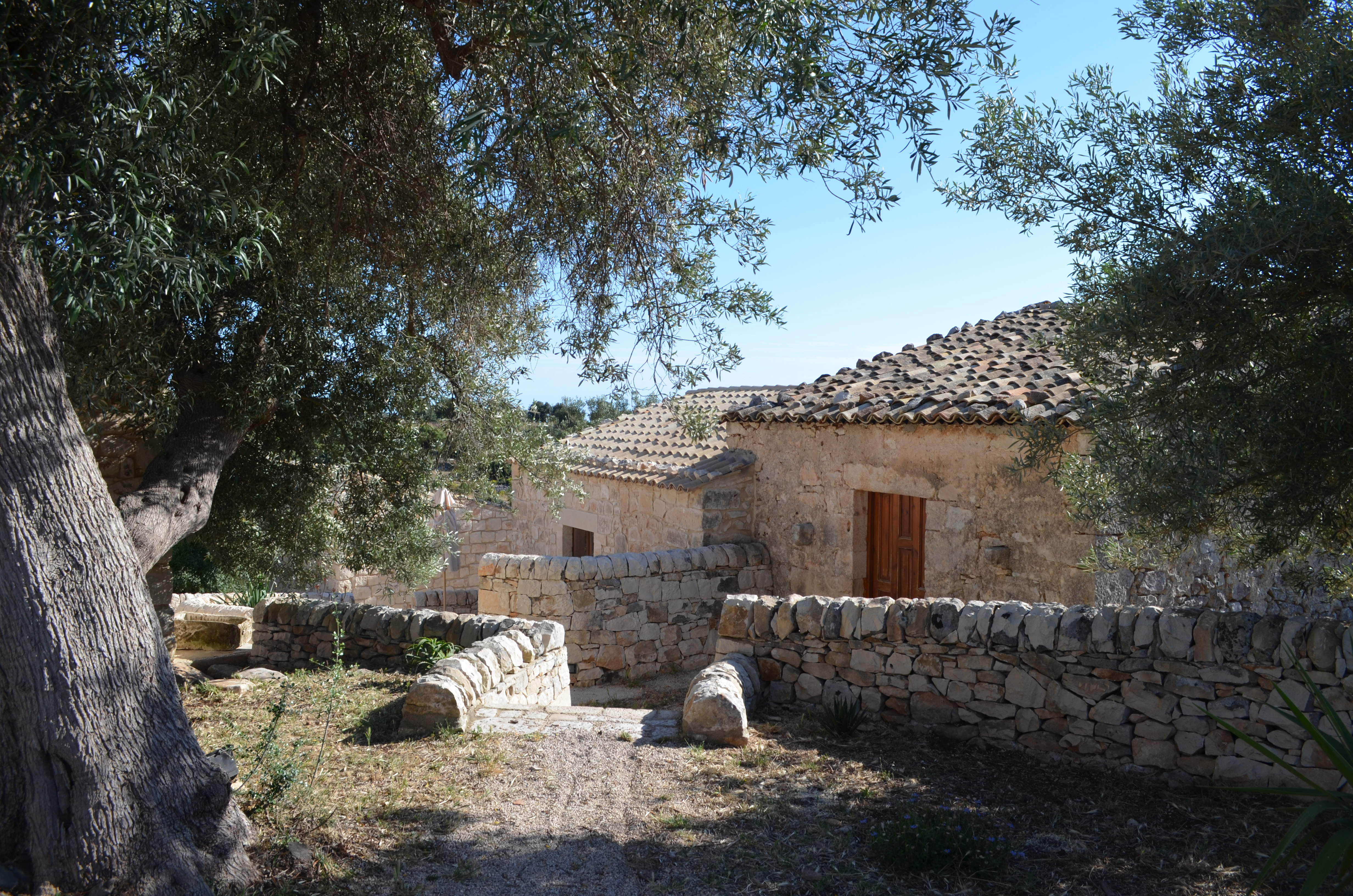
My mother drove us through the hilly countryside to Modica, quite a sight with its Baroque churches lit up along the hillside. We made our way to the top and enjoyed a thoroughly modern take on traditional Sicilian flavors at La Gazza Ladra, the converse of that day’s lunch, and tasted the traditional chocolate for which the town is famous, and later came back for a lesson in traditional ways to make chocolate, still in use today.
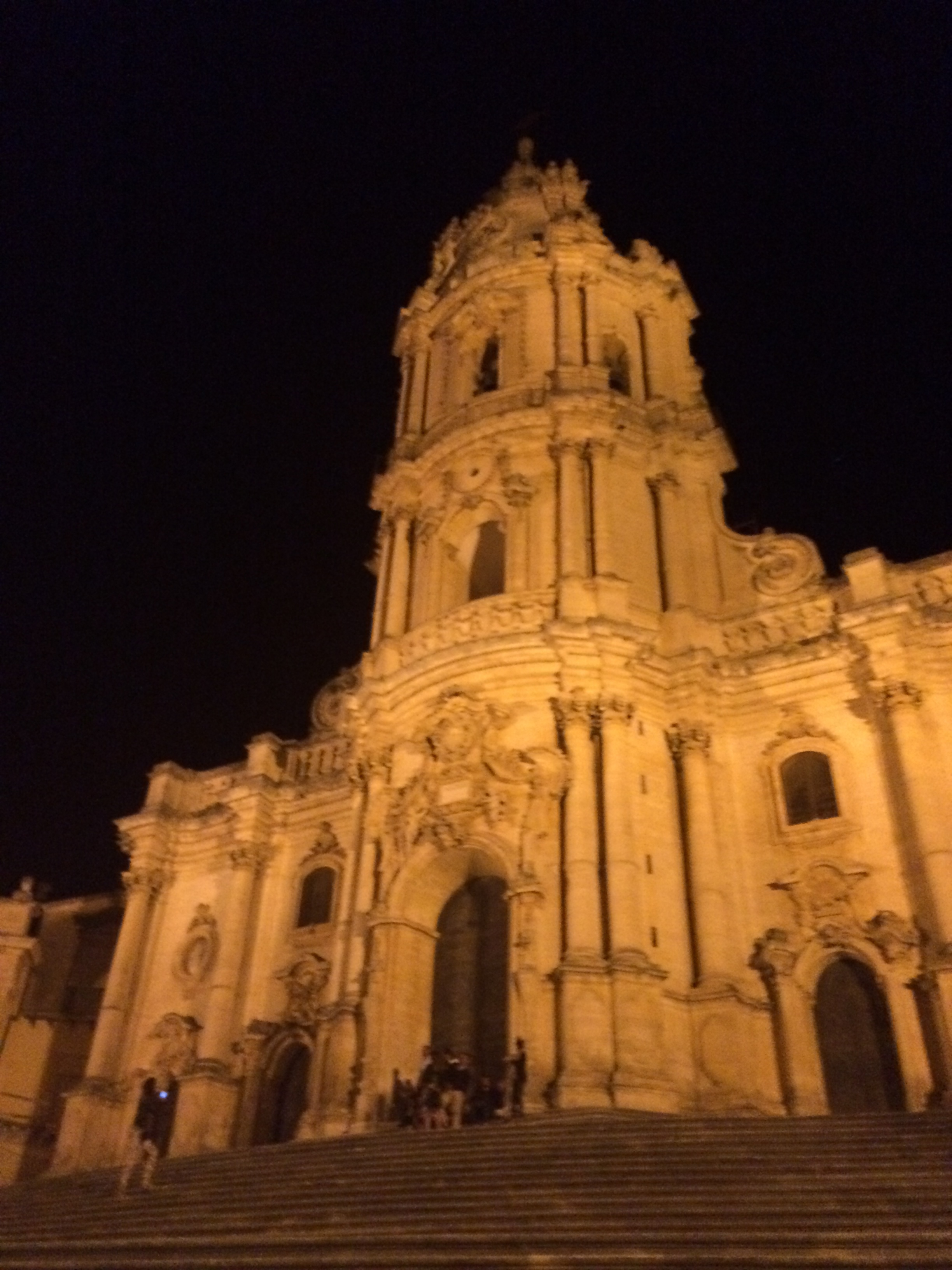

We sadly only stayed at Tenuta Zannafondo for a night and were so full from the previous evening’s delights that we merely sampled the rich array of breakfast cakes made by the owners on our way to lunch. With nothing planned for a Sunday afternoon, we made our way down to the coast and stopped to wander a nature reserve along the coastline between the Marina di Ragusa and Donnafugata, where the agave plants’ stems reached high into the sky above like large asparagus shoots, some so heavy that they’d toppled over.

We were grateful that food writer Roberta Corradin’s restaurant Il Consiglio di Sicilia in the town of Donnafugata was open for lunch, so grateful that we stayed for four hours, aided by the delicious food coming out of her husband’s kitchen, the stories she shared about every ingredient’s origin, and of course the two bottles of Marco de Bartoli’s Grillo and Zibibbo blend (only 11% abv) from Pantelleria island that tasted of salt and almonds.
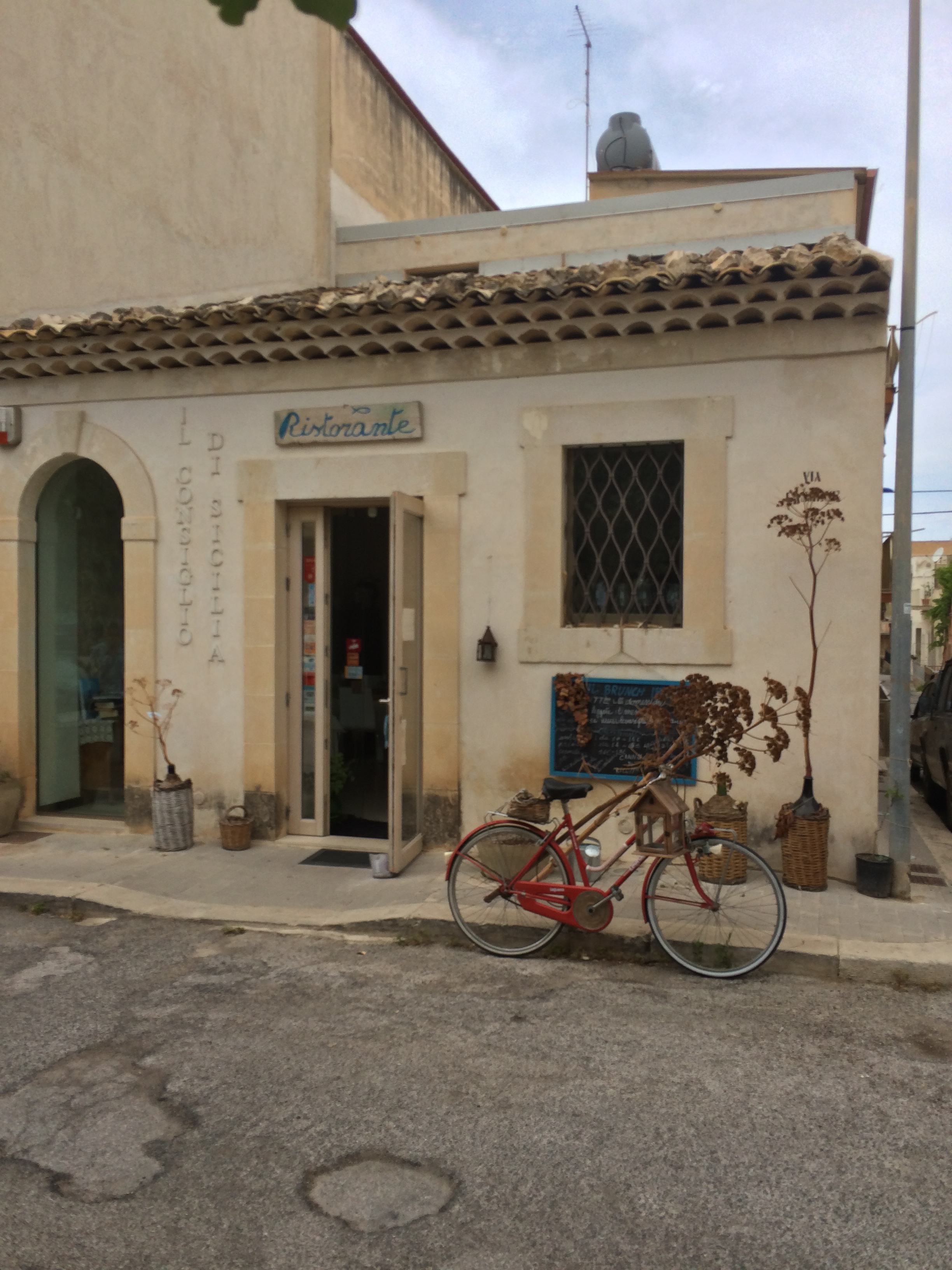
From there, we made our way to Noto, a city destroyed by the earthquake that rocked the region in 1693 and was rebuilt by the great Roman architects of the High Baroque period. The main street is a sight to behold, especially at night when the men sashay down the street for their nightly passeggiata.
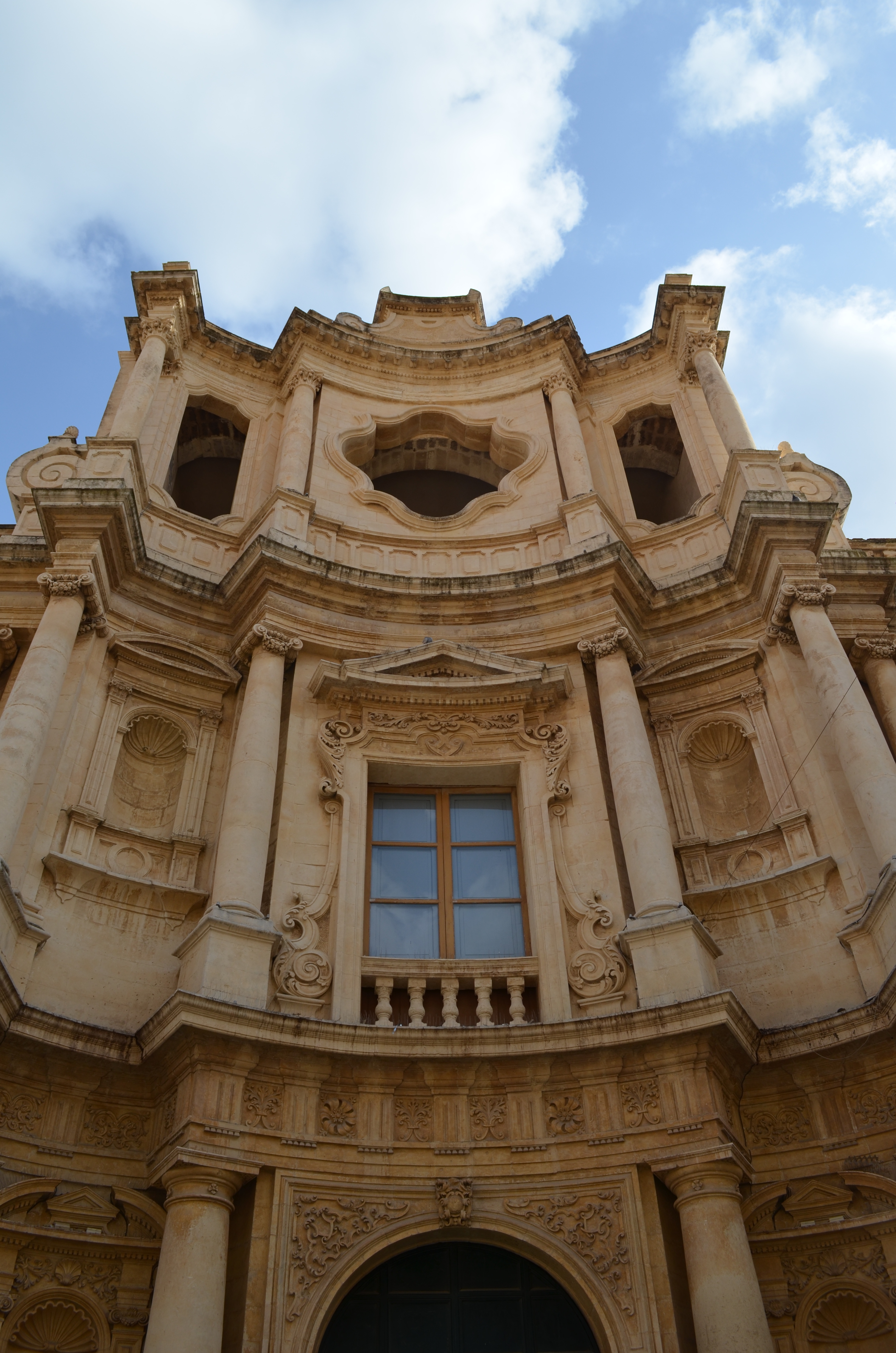
Noto is known for its sweets, so we couldn’t help but sample the pastries at the Caffè Sicilia and the ricotta granita at Mandolfiore during our stay there. The women here have very traditional roles based around the home, cooking all day, which we experienced for ourselves through a series of cooking classes in the homes of local women (booked through a local cooking program). We were delighted to see the simple, at-home touches that each woman brought to her recipes, each fiercely convinced their way is the only way to make each dish.


We visited Siracusa, an easy drive from Noto and a much larger city, to go to its famed fish market and visit its archeological park. Siracusa was part of Magna Grecia (greater Greece), and its ruins are well-preserved.
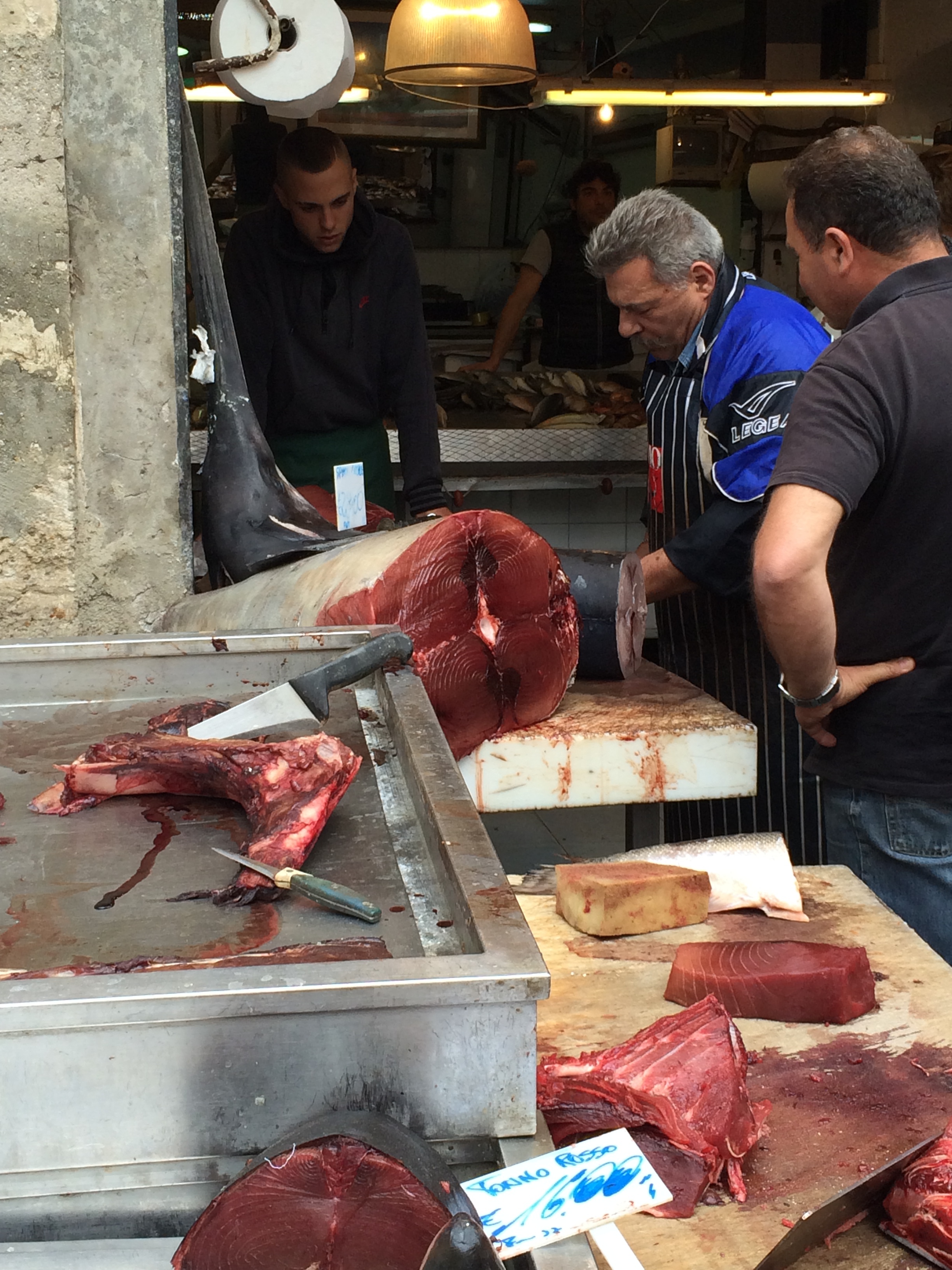
We took a fabulous guided tour that spoke to the history of the theater and the town once based there, which was long forgotten once the town’s epicenter moved a few kilometers away. Once rediscovered, it was made into a national park as well as a theater; we had the good fortune of visiting during May, when the theater comes back to life with the performances of Greek tragedies that once debuted on the same stage, millennia before, still timed so that the climax peaked as the sun was setting behind the theater.


On our last day in Sicily, we stumbled upon a gem of a beach near the Lido di Noto due to an off-hand remark by a local about the joys of swimming at the base of the Elloro ruins. Alas, the gates to the ruins closed at 1pm, but we kept going down a dirt road until we found 33 kilometers of untouched natural paradise. We took off our shoes and waded in the water, with only a few other souls around us. If it’s summer, don’t leave a trip to the Lido di Noto and the nearby Vendicari nature reserve until the last day like we did.

We flew out of Catania so that we wouldn’t have to double back to Palermo, meaning we spent a small amount of time in this black-stoned port city. Fish and prostitutes abound, but an aperitivo at the top of the UNA Palace Hotel gives you a great, final view of Mt. Etna, high above the gritty streets below.
To stay:
- Tenuta Zannafondo (Ragusa) – We were delighted by our simple, clean, neatly appointed room in this restored country property in the rural area around the town of Ragusa. The family that owns the hotel lives here with their young children, and the wife makes a delicious spread of breakfast cakes for the morning. – C.da Zannafondo sn, 97100, Ragusa
- UNA Palace Hotel (Catania) – If you need to spend a night in the city at the start or end of your trip, I’d recommend this luxury hotel in the middle of town. The view of Mt. Etna from its rooftop shouldn’t be missed. – Via Etnea 218, 95131, Catania
- I’d also suggest staying in Siracusa and taking day trips around the area, like heading up to Noto, but we did the opposite and thus I have no hotel recommendations for the Siracusa area.
To eat:
- Il Consiglio di Sicilia (Donnalucata) – Great ingredients, simple preparations, and an eye toward preserving tradition all characterize this fish-centric restaurant by the sea. Owner Roberta Corradin also teaches cooking lessons, and we’ll certainly be back to pick some olives with her. – Via Casmene, 79, Donnalucata (Ragusa)
- Majore (Chiaramonte Gulfi) – Despite the lengthy, bilingual menu, you’ll have whatever the kitchen has decided to make that day, and it will be served family-style by a waiter who does not speak anything but Sicilian. If you don’t eat pork, it’s not worth the trip; if you do, it’s a must-visit, both for the food and the experience. – Via Martiri Ungheresi, 12, 97012 Chiaramonte Gulfi (Ragusa)
- La Gazza Ladra (Modica) – When you’re ready for some elegant fine dining, there’s no place better than this lovely restaurantl, with its whitewashed vaulted ceilings and inventive takes on traditional ingredients. I had mozzarella ravioli served to me floating in a bath of caper-and-basil-scented tomato water.
- Mandolfiore (Noto) – Noto is known for its sweets, and everyone tends to make a beeline for Caffè Sicilia off the main street. While well worth a viist, it’s also worth seeking out Mandolfiore for its robust selection of granite, served in a large bowl with a warm brioche. While you should certainly test out the different flavors, you’d be a fool to pass up the ricotta granita, with its rich, icy milk pudding flavors and textures.
To see:
- Wineries in Vittoria (Ragusa) – Again, you’ll need to book an appointment, but take the time to visit Arianna Occhipinti’s new facilities on SP68 (like her eponymous entry level wine) and taste her gorgeous Frappato. Other wineries to visit: COS (some serious amphorae aging going on there) and Valle dell’Acate.
- Chocolate making lesson at Antica Doceria Bonajuto (Modica) – When the Spanish ruled Sicily, they brought back chocolate from the Americas. This traditional chocolate-making company is one of the oldest producers in the city and is still family owned. Come in for a behind-the-scenes peek (schedule ahead) and a taste of chocolate made by hand, shaken with thick granules of raw sugar.
- The Vendicari Nature Reserve (Lido di Noto) – Follow the signs to the Elloro ruins, just outside of the Lido di Noto, and you’ll arrive at the northern entrance onto 33km of untouched natural paradise. It’s worth taking a blanket and a picnic and just spending the day enjoying this pristine environmental reserve.
- Baroque architecture in Noto – Noto was destroyed by the 1693 earthquake that rocked the Siracusa region. The top architects from Rome descended upon the area, and Noto is the crowning jewel of their achievements, with the beautifully coordinated façades along the main street serving as testaments to the High Baroque style.
- Shopping and drinks by the sea (Marzamemi) – This old fishing town has been in use since the Arabs controlled the island in the 10th century and was once home to the first (and one of the most important) tonnara, or tuna processing plant, on Sicily. With the decline of the traditional fishing methods, the city now serves as a quaint tourist attraction for those in the know, a place to grab a drink on the piazza at Liccamuciula and buy traditional Sicilian products at Campisi.

- The Greek Ruins at the Archeological Park (Siracusa) – The ruins are open for visitors, and I’d recommend booking ahead with a guide. If you are visiting in May or June, ask about tickets to see one of the Greek tragedies that is staged on the same theater where many of the plays debuted thousands of years before.
- The Cathedral of Siracusa (Siracusa) – This marvelous structure is found in the main piazza of the Ortygia island, which is also home to Siracusa’s famed fish market. The Duomo is the only know Greek temple still in use, as it has been transformed over millennia into a cathedral, mosque, and again a cathedral, with Baroque flourishes added after the earthquake of 1693 that miraculously only affected the façade and not the entire building.
